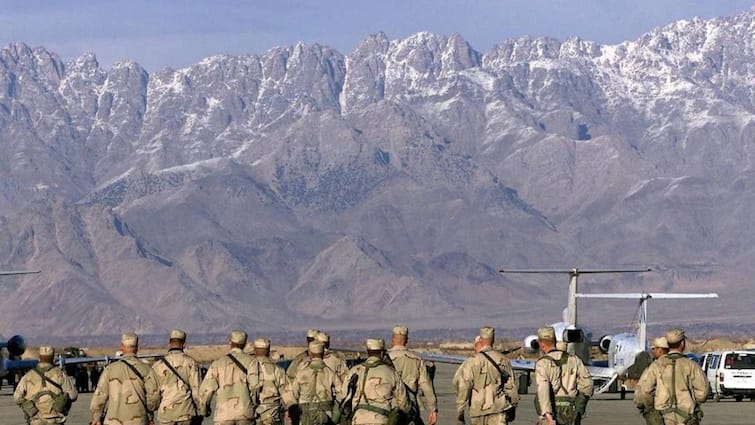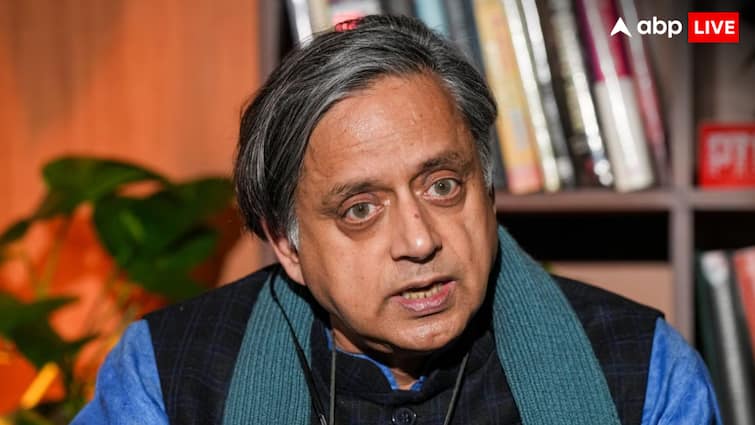Bagram Air Base, situated in Afghanistan’s Parwan Province, is more than a relic of America’s longest war. It is a geopolitical flashpoint whose fate could determine the balance of power across South Asia, Central Asia, and the Middle East. Though abandoned by US forces in 2021, its strategic significance refuses to fade. Today, as calls for its reoccupation by Washington resurface, the implications stretch far beyond Afghanistan. For India in particular, Bagram represents not opportunity but danger, threatening to unleash new waves of instability while empowering Pakistan in ways unseen since the Cold War.
The Geostrategic Jewel of South Asia
The airfield’s location alone makes it one of the most valuable pieces of real estate in modern geopolitics. Less than 40 miles from Kabul and positioned at the crossroads of Asia’s most volatile theatres, Bagram offers unparalleled military reach. Its two enormous runways, measuring 11,800 and 9,688 feet, can handle the heaviest bombers, drones, and cargo aircraft. Former US President Donald Trump highlighted its value when he remarked that Bagram lies “just an hour away from where China makes its nuclear weapons.” No other installation in the region provides such proximity to Beijing’s most sensitive facilities.
#WATCH | On Bagram Airbase in Afghanistan, US President Donald J Trump says, “We’re talking now to Afghanistan, and we want it back, and we want it back soon. If they don’t do it, you’re going to find out what I’m going to do.”
(Source: US Network Pool via Reuters) pic.twitter.com/nje7BJwSXQ
— ANI (@ANI) September 21, 2025
Bagram has long been a hub for intelligence and surveillance, hosting advanced ISR systems that enabled Washington to monitor Chinese nuclear silos in Xinjiang, Russian troop movements, and Iranian proxy networks. In an era where real-time intelligence defines battlefield superiority, the base remains a priceless watchtower. With Beijing building new missile silos and expanding its nuclear arsenal, the ability to observe developments from so close a vantage point would provide the United States with unmatched leverage.
The real contest over Bagram is not about Afghanistan itself but about the larger chessboard of great power rivalry. China has already invested billions in Afghanistan, targeting lithium, copper, and rare earth deposits while pulling Kabul into its Belt and Road Initiative. Russia, in a bold diplomatic move, formally recognized the Taliban government in 2025, ensuring that American influence remained marginal. To both Beijing and Moscow, a US return to Bagram would be seen as a hostile act, reigniting Cold War–style confrontation in the heart of Asia.
Afghanistan’s Trillion-Dollar Treasure
Adding to the stakes is Afghanistan’s resource wealth. The country sits atop an estimated trillion dollars’ worth of untapped minerals, including lithium essential for the global energy transition. A US foothold at Bagram could deny Beijing the ability to monopolize these resources while also securing American stakes in the next wave of industrial competition. But such a move would come at immense cost.
We won the #Bagram military base with the sacrifice of our lives, and since then we have trained many young people for it and will protect it with the sacrifice of our lives. #Trump, tell your devilish dream to your devils. @Army_of_Afghani stan pic.twitter.com/Dl7XqCnu4a
— Army of Afghanistan (@Army_of_Afghani) September 21, 2025
The Taliban, now firmly entrenched in Kabul, have made their position crystal clear. Chief of Staff Fasihuddin Fitrat has declared, “We do not fear any bully or aggressor. A deal over even an inch of Afghanistan’s soil is not possible.” Foreign Minister Amir Khan Muttaqi has struck a similar tone, insisting that while the Taliban welcome economic cooperation, they will not accept the return of foreign troops. For the Taliban, Bagram is more than a base, it is the ultimate symbol of their triumph over the United States in 2021. To permit its reoccupation would undermine the very legitimacy of their rule.
Beijing and Moscow Close Ranks
Predictably, China and Russia have echoed Kabul’s opposition. Beijing, wary of US surveillance of Xinjiang, has warned against “hyping up tensions.” Moscow, having legitimised the Taliban regime, sees any American return as a direct intrusion into its Central Asian backyard. Together, these powers are likely to mobilise diplomatic and financial pressure against Washington. More worryingly, they could channel support to anti-US militias to keep Bagram under siege.
Even if Washington were determined to return, the operational challenges are formidable. Military planners estimate that more than 10,000 troops would be required to secure Bagram, along with layered air defences and massive logistics. Yet geography works against the Americans. Surrounded by mountains and exposed to guerrilla tactics, the base could quickly become a fortress under constant rocket fire, reminiscent of the isolated garrisons during the Soviet war in Afghanistan.
Terrorist Networks Smell Opportunity
A US comeback would also ignite extremist fury. Groups such as ISIS-K and al-Qaeda would treat reoccupation as a gift for recruitment and propaganda. ISIS-K, already resurgent, has shown its global reach with devastating attacks in Iran and Russia in 2024 that killed more than 230 people. Al-Qaeda, though weakened, has quietly rebuilt nine training camps in Afghanistan. Both groups would frame Bagram’s revival as proof of “colonial aggression,” rallying jihadists from across the Middle East, Africa, and beyond.
The consequences would not remain confined to Afghanistan. From July to December 2024, more than 600 attacks were launched from Afghan soil into Pakistan. A renewed US presence would likely push these networks to escalate operations against both American troops and regional rivals. Tehreek-e-Taliban Pakistan would intensify its strikes, while Uyghur militants could be drawn into ISIS-K’s orbit to target China. Iran and Russia might covertly funnel money and weapons to insurgents, ensuring a prolonged shadow war that drains American resources.
For India, however, the dangers are particularly acute. The most immediate risk lies in cross-border terrorism. Afghan-based groups maintain operational ties with jihadist networks in Kashmir and Punjab. A resurgent insurgency in Afghanistan would inevitably spill over into India’s troubled regions, giving fresh momentum to militancy. At the same time, extremist propaganda targeted at South Asian audiences would accelerate radicalization, exploiting communal fissures within India.
Equally worrying is the prospect of Chinese encirclement. With Pakistan already hosting the China-Pakistan Economic Corridor, Beijing’s deepening foothold in Afghanistan tightens the noose around India’s strategic autonomy. A US presence at Bagram, paradoxically, may offer intelligence that benefits India by exposing Chinese nuclear moves. Yet it could also drag New Delhi into a dangerous balancing act, forcing it to navigate between Washington’s expectations and Beijing’s wrath.
Economic Stakes for New Delhi
Economically, the stakes are no less severe. India has eyed Afghan minerals, particularly lithium, as part of its resource security strategy. But if Bagram becomes an American asset, or if Beijing consolidates its mining interests, New Delhi risks being cut out of the competition altogether. Unless India asserts itself diplomatically in forums such as the Shanghai Cooperation Organisation and the United Nations, Pakistan may once again emerge as the primary gatekeeper to Afghanistan.
Indeed, Pakistan may be the greatest beneficiary of Bagram’s revival. By offering itself as the logistical corridor for US operations, Islamabad could revive the cycle of aid, weapons transfers, and political influence that it enjoyed during the Cold War and the War on Terror.
Even more troubling for India, Pakistan’s terror proxies would find new breathing space. Groups like Lashkar-e-Taiba could exploit Afghan sanctuaries, while Islamabad’s cherished concept of “strategic depth” would be restored.
The Indian Dilemma
The dilemmas for Washington are immense, but for India, the choices are existential. Border security must be tightened, with investments in counter-drone systems, intelligence networks, and rapid response capabilities.
At the same time, New Delhi cannot afford to ignore the Taliban regime. Pragmatic engagement, economic, diplomatic, and humanitarian, is necessary to ensure that Pakistan does not monopolise Kabul’s ear.
India must also leverage partnerships with the United States, the European Union, and Japan to balance Beijing’s expanding influence, without alienating Russia. Strategic patience will be essential.
Unlike Washington, India cannot afford to treat Afghanistan as a theatre for experimentation. For New Delhi, the stakes are existential.
Conclusion: A Looming Storm
In the end, Bagram Air Base is no longer just an airfield. It is a symbol of unfinished wars, resurging rivalries, and dangerous ambitions. For the United States, it represents an opportunity to reassert power against China. For Pakistan, it offers strategic depth and renewed leverage. For India, however, it is a looming storm that threatens terrorism, encirclement, and economic marginalisation.
The true question is not whether America can return to Bagram, but whether doing so would plunge South Asia into another cycle of fire. For India, the answer is clear. New Delhi must prepare for turbulence, engage all stakeholders, and most importantly, ensure that Pakistan does not dictate the Afghan narrative once again.
India’s Growing Vulnerability
Amid the evolving dynamics surrounding Bagram, India finds itself increasingly exposed on multiple fronts. The reactivation of terrorist safe havens in Afghanistan, coupled with Pakistan’s renewed leverage as a logistical corridor for US operations, could push cross-border militancy into overdrive. Already battling insurgency in Kashmir, India risks facing a two-front threat: on the western flank from Pakistan-backed groups emboldened by Afghan sanctuaries, and on the northern flank from China, which will tighten its strategic encirclement through Afghanistan and Pakistan under the Belt and Road Initiative. Economically, New Delhi’s aspirations to secure Afghan minerals may be sidelined by Washington and Beijing, further reducing its influence.
Diplomatically, India risks being marginalised in a US-China-Russia contest where Pakistan positions itself as the indispensable power broker. In essence, the very reoccupation of Bagram that promises stability for Washington could transform India into the soft underbelly of regional insecurity.
(The author is an international expert on National Security & Counterterrorism in West Asia & the Middle East)



